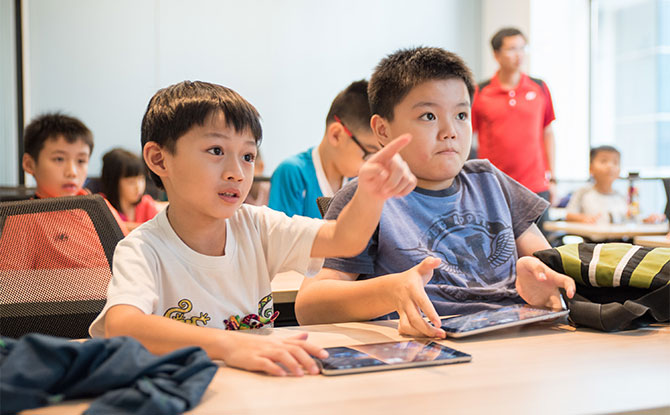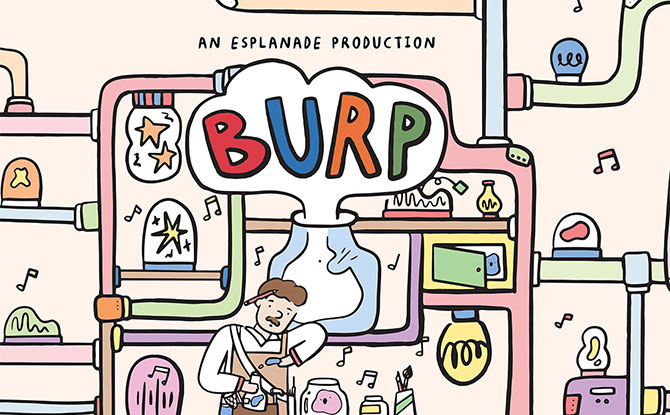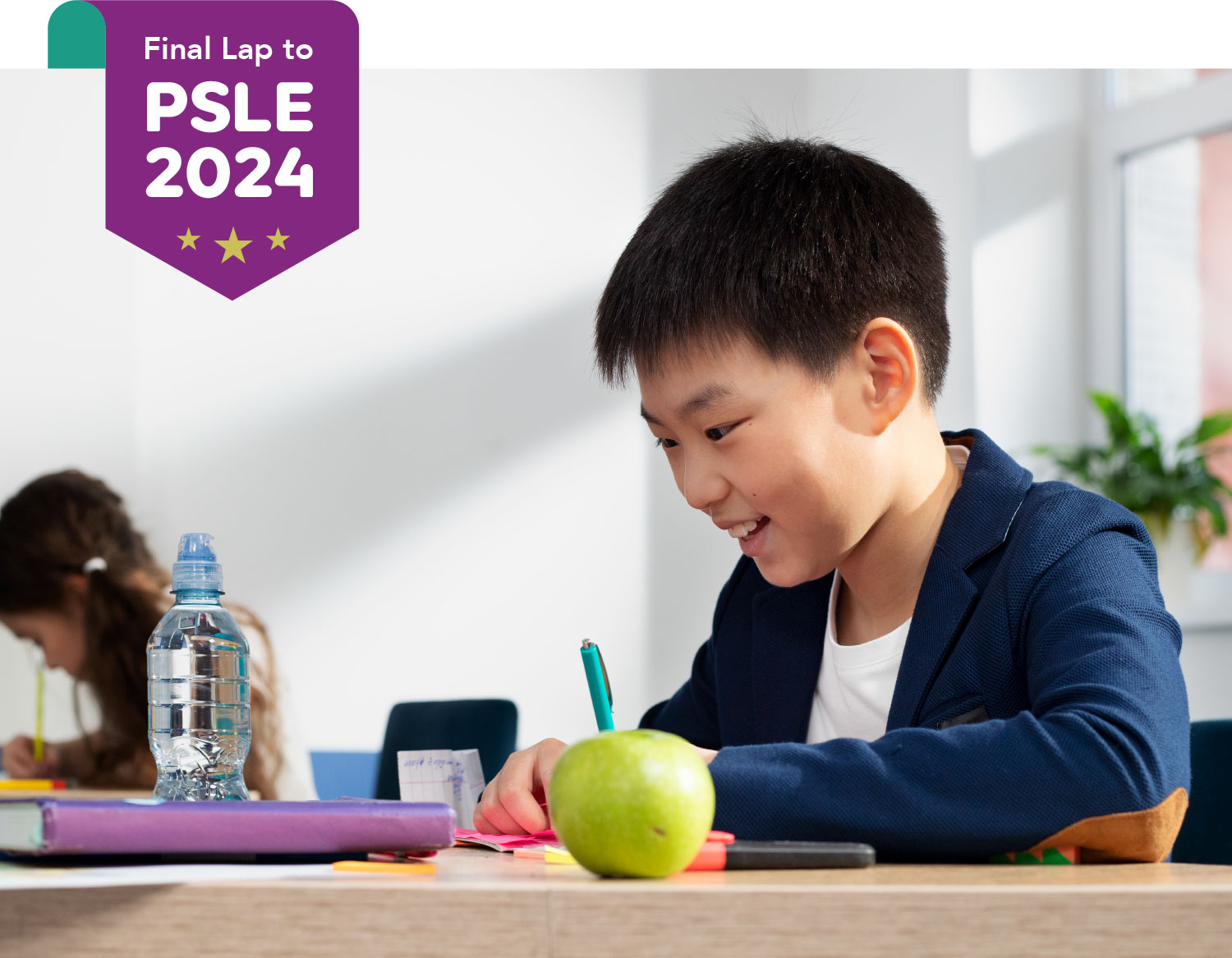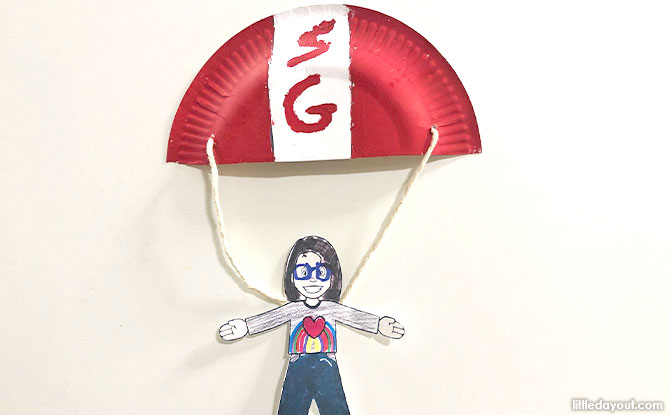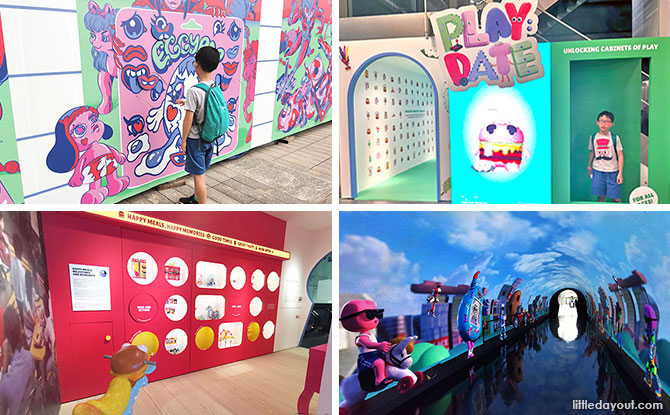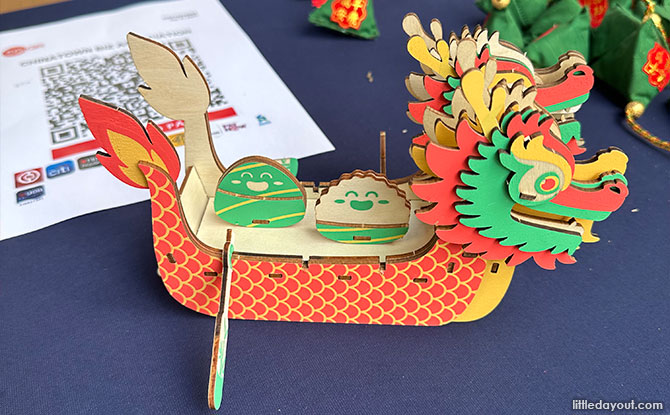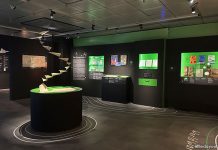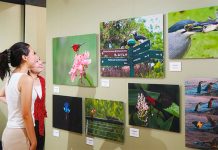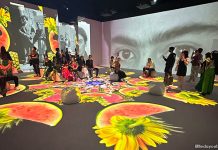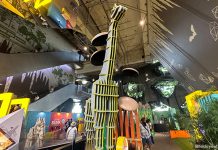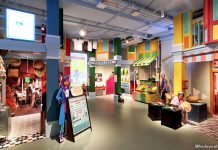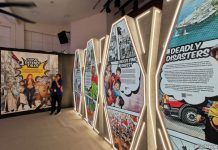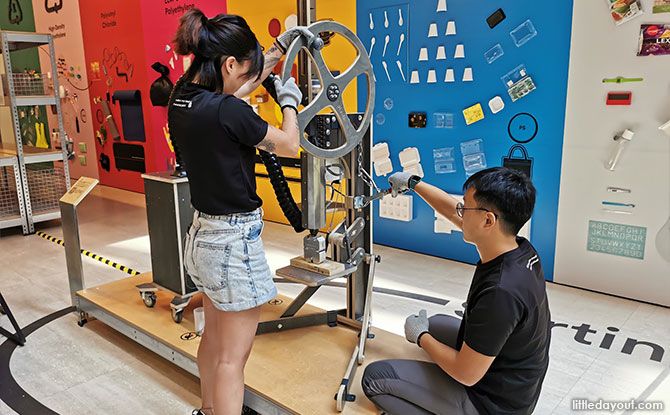
Whether you are an eco-warrior or not, this exhibition on plastic will make you think twice about your life surrounded by plastic. (Hint: It’s not fantastic) Plastic: Remaking Our World explores the beginnings of plastic, how using plastic became a problem and what we can do now.
Rather than demonise plastic, this travelling exhibition by the Vitra Design Museum, V&A Dundee and Matt will inform, provoke and educate visitors about the “omnipresent” material.
Plastic describes materials that can be formed and moulded under pressure. Most plastics we see now are polymers – a chemical class of materials and large molecules consisting of monomers.
Our lives are dependent on plastics, regardless of the choices we make. Plastics are in our clothes, devices, make-up, furniture, vehicles, toys, daily necessities and have become a convenient part of modern lifestyles.
BE PSLE-READY: Join Expert Educators for Revision Boosters to Empower P6 Students
BURP: Join the Sound Collector on a Whimsical Chase at Esplanade – Theatres on the Bay
WEEKEND IDEAS: Get Inspirational Ideas of Things to Do
What to Expect at Plastic: Remaking Our World
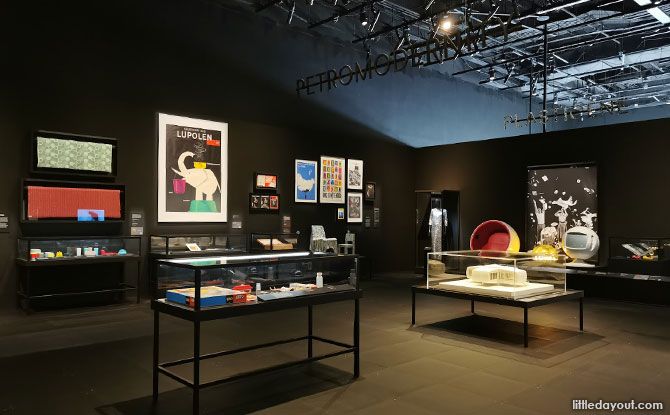
Plastic: Remaking Our World has three main sections:
Kalpa is an immersive film installation that shows how plastic came to be a huge source of pollution. This 9 minute film addresses what the problem with plastic is and also the threat of it on earth.
Synthetica, Petromodernity and Plasticene, the second section of the exhibition is about plastics from 1850 till today. Did you know that plastics were plant-based or made from animals in the beginning? This evolved to include synthetics which are widely used in many aspects of our life.
Re-, the final section sparks conversations on using plastic in a more sustainably, alternatives to plastic and the possibility of achieving a circular plastic economy.
The exhibition features over 300 objects, posters, films, photographs and rarities. It also includes a local narrative of Singapore’s history with plastics. Ready for Barbie, Tupperware and Space Age furniture?
Highlights from the Exhibition – How Did We Get Here?
Dedicate some time to Asif Khan’s film KALPA, which in Sanskrit refers to the period of time in Hindu and Buddhist cosmology about the creation, destruction and recreation of the world. The dual screens show on side, the planet evolving and on the other the creation of plastics.
The tune of Strauss’s Blue Danube booms in sync with the visuals culminating in a very foreboding yet powerful message to viewers.
The same piece was performed at the 1867 Paris Exposition, where the semi-synthetic plastic Parkesine won a silver medal and gave birth to the plastics industry.
Parkesine was significant in reducing the dependence on natural plastics. Natural plastics such as shellac, horn, tortoiseshell, amber and rubber have been around for thousands of years.
However, plundering and exploitation led to shortages due to near extinction of species leading to the interest in new materials.
How Plastic became Plastic
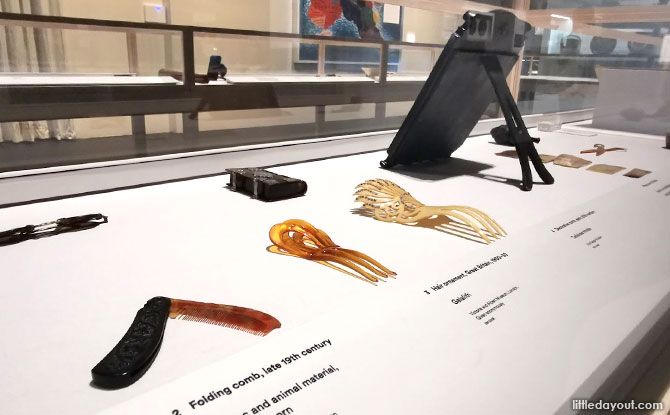
In the section “Synthetica”, visitors can see everyday items such as combs, furniture, even a child’s brace made with natural and semi-synthetic plastics.
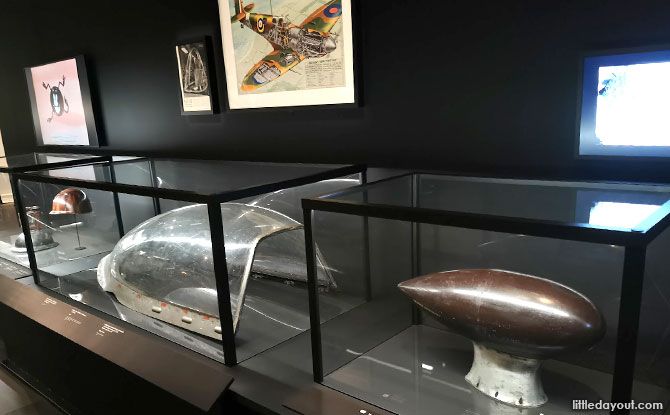
In the adjacent gallery “Petro-modernity”, plastic has been tied to innovation and a democratic society since it has made everyday items accessible to the general public.
As science advanced, better and more flexible plastics were invented. The advent of new plastics fuelled mass production.
Following World War Two, the oil and petrochemical industries established plastic as the material of everyday life. For instance, plastic made planes faster, lighter and less dangerous to the pilot.
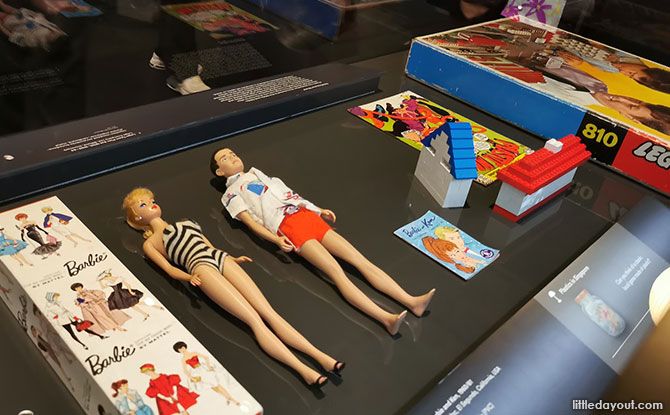
Durability also meant it was easily used as kitchenware, toys, furniture. It also spurred us to have “more efficient” lifestyles by saving time, easy-to-clean gadgets. Baby feeding bottles, soft drink bottles, monitors were all made of plastic.
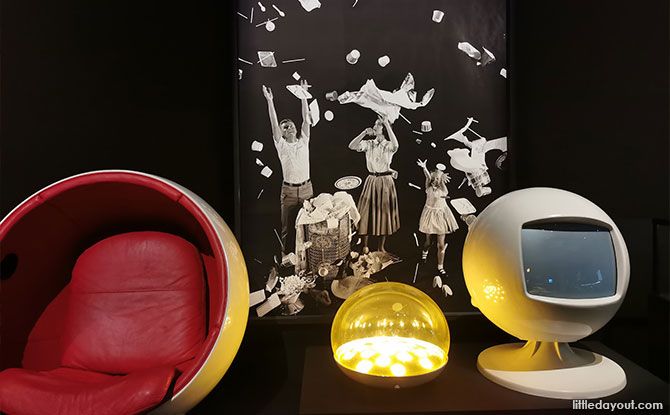
The 1969 moon landing fuelled the use of plastic since the materials played an important role in enabling humans to land on the moon. Product, lifestyle and fashion design was influenced by the space age and spread of pop culture.
In the medical field, plastic is seen as an essential material used from blood and infusion bags to syringes, breathing tubes, incubators and defibrillators.
Visitors can also see a steel-frame shelter made with plastic panels meant to house displaced people for extended periods of time. The shelter can be flat-packed and built within four hours.
While clearly a paradox, the dependency on plastic can both harm and save lives.
RE- Alternatives to Plastic and Rethinking Plastic
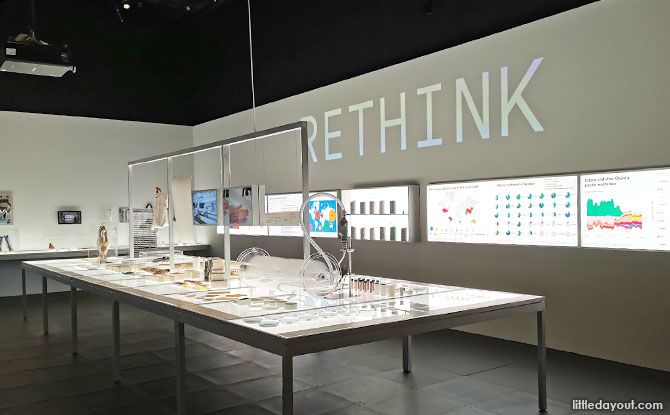
The last section of the Plastic: Remaking Our World exhibition focuses on alternatives to plastic and how communities are reducing pollution.
Via videos and interviews, visitors can see how groups such as The Ocean CleanUp, Sungai Watch and Everwave attempt to clean up waterways.
We also learned about recycling and how only nine percent of plastic waste is actually recycled.
Infographics also show data from different parts of the world regarding recycling statistics and the importance of legislative work to ensure effective recycling.
Visitors can also see the various types of alternatives to plastics created with various means such as fermenting, growing, weaving, 3D printing with biodegradable materials.
If the exhibition made you rethink your relationship with plastic, perhaps you can consider alternatives to single-use plastics and intentionally reuse, repair or recycle.
With each individual doing his or her part, we are steps closer to a circular plastic economy.
Hands On Activities and Special Workshops
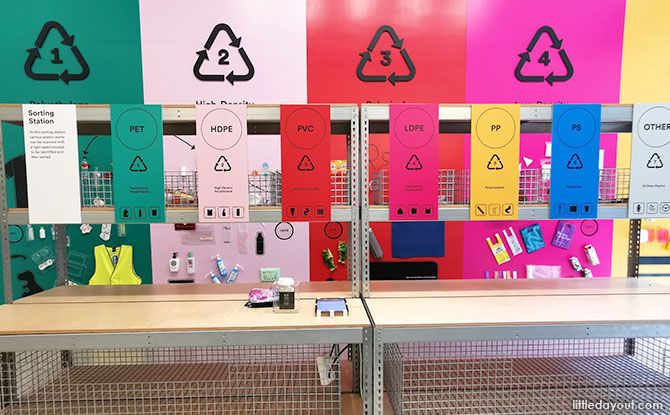
Outside the exhibition, visitors can sort plastics with the help of a scanner and learn about various types of plastics.
Did you know that not all plastics can be recycled? Then, see how an injection machine that repurposes waste plastic works!
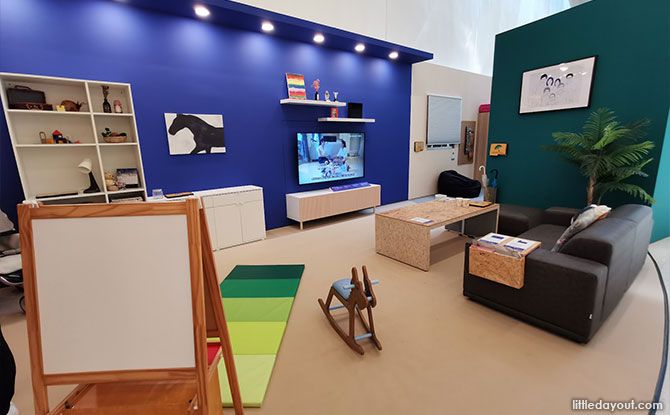
Visitors can also visit the Plastics in Our Lives interactive space modelled after a home.
Step into the bedroom and the living room to see how pervasive the use of plastic is in our daily lives.
The TV in the living room also screens clips on recycling and the process of sorting recyclables from our neighbourhood blue bins.
Families can enjoy the Green Detective’s Challenge – a gamified experience that tests one’s knowledge on recycling.
During the March holidays, the space will be enhanced with a new dining room and an installation titled the Shore Debris Table.
Visitors can help to sort microplastic fragments from the sand collected from Singapore’s Punggol Beach.
Save the date at the exhibition’s opening weekend on 27 January and sign up for workshops such as the microplastics activity and curatorial sharing, a curator tour, eco-games, see live demos of the Injector machine, as well as learn to mend your own clothes.
Biogirl MJ will also be conducting a plastic-themed session on 9 March which includes sharing, trivia and hands-on experiences with different types of bioplastics.
There will also be a drop-in craft activity making upcycled coin pouch using PVC banners on the same day.
Plastic: Remaking Our World at National Museum of Singapore
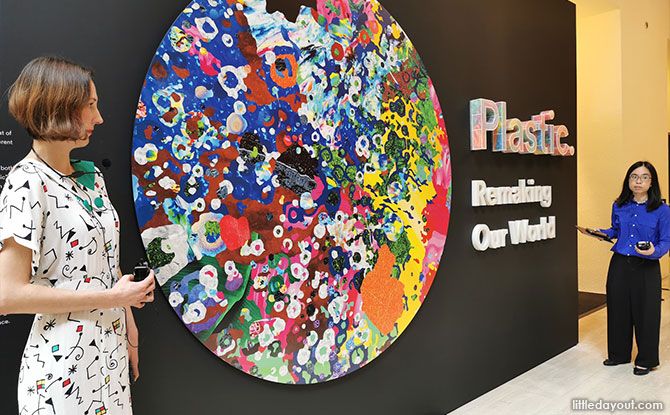
National Museum of Singapore’s theme of the year is sustainability. In line with the theme of the exhibition, reused and recycled plastics were used in setting up the exhibition.
The headers are made from recycled plastic bags and milk bottles, the text has been printed with water-based ink on PVC-free film.
Display cases have also been reused from previous shows and glass has been used where possible. The museum also organised an internal collection drive for NHB staff to donate their items.
In conjunction with the exhibition, residents in Singapore will also have the chance to contribute their stories and photos of objects relating to the theme of plastic and sustainability.
Selected submissions may be accessioned into the museum’s collection and featured in future exhibitions.
This public call is part of the National Museum’s ongoing Collecting Contemporary Singapore 1 initiative.
Visit this site to learn more about the call, which runs until 31 December 2024.
Visiting Plastic: Remaking Our World
Where: National Museum of Singapore’s Exhibition Gallery 1, Basement
When: 10 am to 7 pm, 27 January to 23 June 2024.
Plastic: Remaking Our World Website
Tickets for the exhibition are priced at $5 for Singapore Citizens and PRs, and free for students, seniors and persons with disabilities.



